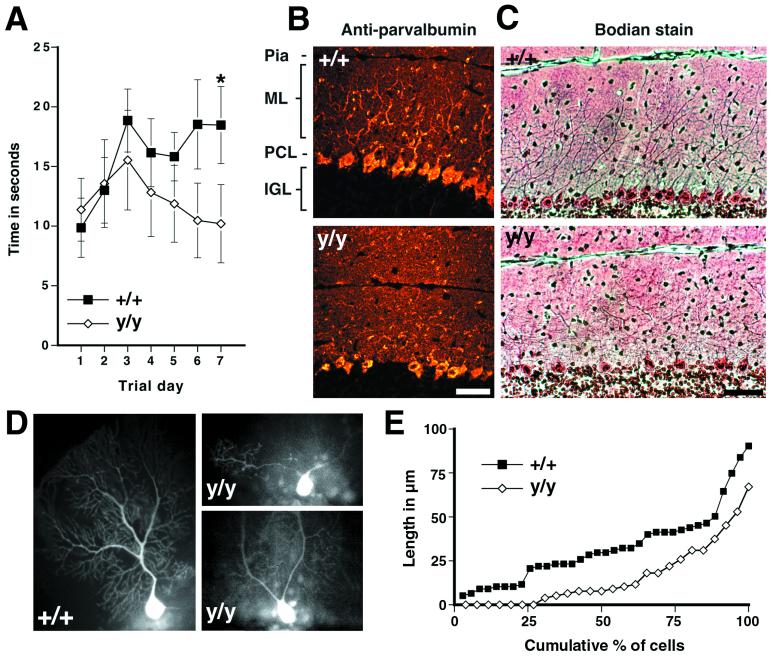Figure 3.
Motor-learning deficits and dendritic changes in Atmy/y mice. (A) Performance of wild-type mice but not Atmy/y mice on an accelerating rotating rod improved over the trial period (P < 0.01 by repeated-measure ANOVA, regression slope = 1.21 s/day, P < 0.05), and by the seventh trial day, wild-type mice performed better than Atmy/y mice (P < 0.02, Mann–Whitney rank sum test). (B) Parvalbumin immunohistochemistry of midsagittal cerebellar sections from 5-mo-old wild-type (Upper) and Atmy/y mice (Lower) reveals the altered dendritic arborization of Purkinje cells in Atmy/y mice. (C) This can also be observed in Bodian-stained sections from 1-yr-old mice, wild-type (Upper), and Atmy/y (Lower). (D) Lucifer yellow-injected wild-type and Atmy/y Purkinje cells displaying either the prototypic morphology (+/+) or premature dendritic branching (y/y), which can result in multiple dendrites emanating from the soma (upper y/y cell). (E) Cumulative percent graph of stem dendrite length; 7 of 26 Atmy/y Purkinje cells have multiple dendrites. (Scale bar in B and C is 50 μm.)

